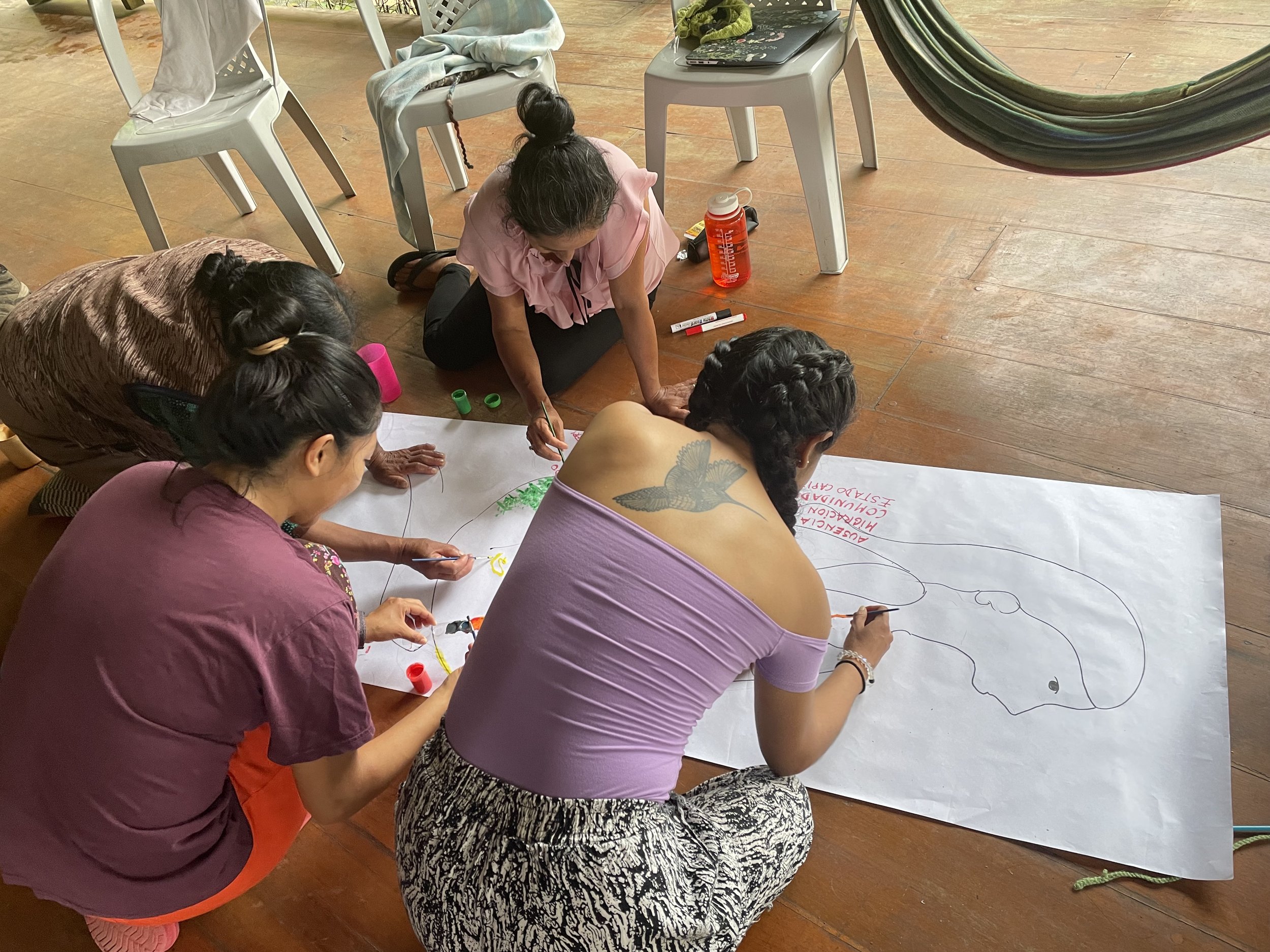
NON-REPRESENTATIONAL CARTOGRAPHY
In collaboration with the Pachaysana Foundation, I have co-led several workshops with rural communities and U.S. students to explore what it means to think/feel about our territories and landscapes as spaces intrinsically intertwined with our bodies. Such exploration requires working in groups to think collectively about how specific problems affect our communities while simultaneously affecting our bodies and territories. For example, we have explored questions such as:
How does it look and feel to have our local river contaminated? If about 60% of our bodies are water, how could we relate to the suffering of non-human elements, such as our local river, if contaminated?
How does it feel to ingest microplastics associated with the oil industry unwillingly continuously? How does living close to an extractive oil site look and feel?
These questions allow us to think of our bodies and territories or landscapes as part of the same fabric, evidencing environmental problems that apparently take place outside of our immediate reach, affecting our lives and communities directly.
Body-Territory and Non-Representational Cartography
Body-Territory maps and cartography combined tell a story:
Credits: Maps by Píntag community members, cartography by Lily Houtman
Honoring Indigenous and Rural Ways of Thinking About Place and Space
Body-territory and territory body-land are part of a body of knowledge in Latin America known as ‘territorial or communitarian feminisms’. Body territory is a theoretical framework and methodology that challenges Western linear and cause-effect thinking as it requires us to see ourselves and others as materially and emotionally interconnected. Territorial and communitarian feminisms also stress communitarian aspects of livelihoods as opposed to individuality and market logic. Indigenous women intellectuals who have led efforts to make these epistemologies visible are Lorena Cabnal, Julieta Paredes, and Adriana Guzman among others. At the same time, activist collectives such as the ‘Colectiva Miradas Criticas del Territorio desde el Femismo’, the ‘Critical Geography Collective of Ecuador’, and the Mexican collective ‘Geobrujas’ have developed mapping methodologies or non-representational cartography to help us explore pedagogically and critically the spatiality of race, gender, and class differences through maps.
Want to see and listen to body-territory soundscapes….view the videos below:
Here is some of the visual work that has resulted from a series of workshops:
For more information on how to work with body-territory mapping, please see the manual written by the Colectiva Miradas Criticas del Territorio desde el Feminismo in 2017 (Spanish), or the article published by Elizabeth Sweet and Sara Ortiz Escalante in 2017 (English). Links provided below:
Colectiva Miradas Criticas del Territorio desde el Feminismo


